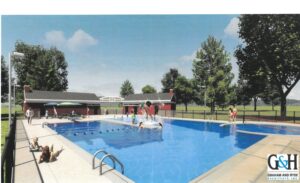Below find some of the common questions (and their answers) that LSCA has been getting about the GROW project.
What does the GROW Project consist of? Why were these projects chosen?
The GROW project takes several projects that we have had on our radar for years and puts them under one umbrella. We have prioritized the projects that support camper safety, better open our facilities to campers of varying abilities, and those that will protect the assets we already have. A few of the tasks were chosen because they would enable guests to experience outdoors in unique ways, which makes the camp attractive to visitors.
This seems like an expensive project. Why are we doing this now?
Some of the projects that need addressed can’t wait any longer. The most urgent need is a new pool and all the build-out to support the pool (sidewalks and patio, excavation, pipes, filtration system, etc). We are only a few seasons away from our current pool being inoperable.
The other projects are tasks that have been on our radar for several years, but we have not made a push to make the repairs. The Grow project groups all these projects into one so that we can hopefully go for quite some time without any major projects.
Every intention is to work towards the pool first- it is the most urgent and critical of all the projects.
Is the current pool not just repairable?
It is not. The concrete can be patched well enough to get through a few more seasons. Repairs extensive enough to repair the pool to last for decades would require bringing all of the pool and adjoining structures up to current code. Our current pool and bathhouse are over 50 years old, and requirements are significantly different now than they were 50 years ago. Any major renovation or repair would require that all current codes be met. The level of repair that would be needed would be considered major. In order to meet current codes, significant work would be needed on the pool itself and the bathhouses would also have to be demolished re-built from scratch.
At this time, when inspections are done annually, our pool is considered legacy and has some leeway. Any major renovations remove the legacy inspection bar.
LSCA feels that it is a better stewardship of funding to build a new pool that is fully accessible and will last for another 50 years.
What does the design of the new pool look like? It seems fancy- explain the thought process.
The current agreed-on design of the new pool is roughly the same gallon volume as our current pool, but it does have about 20% more surface/swim area. We opted for a u-shape because it lowered the overall footprint of the space. This shape is also scalable up or down- we can make the different sections wider or narrower to fit into fundraising. Depending on available funding and final design approvals the finished pool may look slightly different than the current design.

The zero-depth entry with a large shallow area is the most expensive feature of the new pool in the estimate because pool construction estimates are based on surface area. But the zero-depth entry is also the most important feature of the pool.
The zero-depth entry is worth the cost because it makes our pool accessible. It will allow us to open our facilities to guests of varying mobility and keeps our littlest campers safe. Over 60% of our summer campers are under 5th grade and don’t know how to swim well or at all. A large shallow area keeps them safe while still letting them cool off and have fun. The zero-depth entry also opens the pool to our elderly guests who currently avoid the pool. All of this increase in accessibility increases our ability to serve our community.
Several design questions regarding the circular corner of the pool have been brought up; people have thought is a hot tub. This is not a hot tub. It is just a circular space where the normal water jets are angled where they enter the pool, so that the water will create a circular motion when the jets are on. This is an inexpensive way to add a exciting element to the build. When the jets are turned off, the space can be used for water volleyball/basketball games, so that the players and non-players are separate which reduces the risk of accidental injuries.
Adjoining bathhouses are required by law for all commercial pools, and will be fully accessible for our all our campers and guests. We are pleased to ensure that the dignity of all our visitors who want to use the pool is kept intact by being fully accessible.
The new pool will have a modern water management system that is easier to maintain than the current one and less likely to cause skin and eye irritation.
Is there anything that can be done to bring costs down?
Yes- absolutely. If you are a skilled tradesman or business owner that could help us with the labor or materials for any of these projects, we would love to talk to you. For example: donation of fencing for around the pool and donation of labor to install it. Or, roofing experience and a discount on roofing for the steel tent. Please look at the project list and see if you or your business could help with anything.
Some of the tasks on these projects are required by IDPH to be completed by licensed and certified professionals. The pool build specifically must be guided by IDPH and our architects because we are an IDPH- licensed overnight camp facility. Because of this requirement, some of the tasks simply cannot be accomplished by volunteers.
How can I help?
Pray. Here is our prayer list.
In-kind donations are helpful.
Materials or labor to do any of the tasks that can reasonably be done by volunteers.
Monetary donations are helpful, and necessary, for these types of projects. Ultracamp is the software LSCA uses to manage our online donations. It will allow you to give an at-will donation or establish recurring payments monthly or quarterly. If we want to support this project in this way, please ensure the GROW project is selected.
If you prefer, donations can always be mailed to LSCA 1674 Lick Creek Lane, Chatham, Illinois 62629. Please make sure any mailed donations are clearly marked for the Grow fund.
If you are aware of grants available for projects on this list, please share contact information to grow@lscacamp.org.

